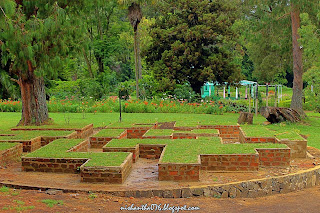For those who haven't gone bird watching, it can look like an odd past time. Yet for ones who have tried it, it can be very rewarding. Bird watching (aka birding) is an opportunity to grasp a closer look of nature. Discover a new way of looking at the world by examining the lives of birds -- including mating behaviors, feeding, and protecting their young.
Learn the best tips on how to enhance your birding experience so you can have the best time possible.
Beginning Bird Watching:
If you are just starting, going with professional bird watchers can be helpful. There are groups you can join, such as the Audubon Society or American Birdwatching Association. They offer such amenities such as lists of birds in the local area, birding books, magazines and articles. Sometimes, they have field trips you can go on to get some experience in bird watching.
When and Where To See Birds:
You can see birds at different times of the day, but certain birds have times they are more active. For example, songbirds start singing and eating two to three hours before sunset. Shortly after sunrise, hawks and eagles become more active as they soar in the warmer, thermal air currents. Owls are more active at night when they are looking for food with their night vision, and shorebirds feed after high tide.
Watching Birds At Feeding Time:
You can offer bird seed, water and shelter for birds in your backyard or garden and attract birds to watch. You can also find them in their natural habitat, eating the foods they would normally eat. Songbirds like seed and many bird types like niger, millet and sunflower seeds. Peanut butter attracts a lot of birds like cardinals, woodpeckers and nuthatches, although they also like suet. Hummingbirds are attracted to red colors and feed on a mixture of sugar and water. Some people add a drop of red food coloring. Birdbaths are a place to see many birds, because not only do they use them for a drink, but enjoy splashing on hot days.
Looking For Breeding Birds:
Unlike humans, birds breed according to specific seasons. Additionally, some migrate before having their young. The majority of birds breed in the spring and summer so that the babies are ready for fall migration. In the fall, some birds are more difficult to identify as some get heavier feathering and duller colors for migration.
Spotting and Identifying Birds:
Birds are easily alarmed, so you need to move stealthily. Basic clues to look for and listen for when identifying a bird are: its habitat, plumage and color, behavior, silhouette and the songs or calls it makes. Also, looking at the beaks can give you a clue and watching what they are doing with it. Woodpeckers have rigid beaks for chipping wood, while hawks, eagles and owls have sharply hooked beaks for tearing up prey. Most backyard birds like cardinals, finches and sparrows have conical beaks while shorebirds have long, slender bills for digging in the sand and prying open shells.
Bird Watching Gear To Bring and Wear:
Of course, binoculars, cameras and something for taking notes is something you need. You may want to keep track of the time of day and activity you witnessed particular birds. You may also want to write down characteristics of the birds you are not familiar with so that you can look them up later, or take along a bird identification guidebook.
You will want to dress in dull colors so that you blend into the surroundings. Camouflage is the thing to keep in mind to see the most birds. Also, fabrics that rustle, snag or squeak will scare birds off. You may want to have boots, warm clothing and rain gear. Owls are best seen and heard at night, so a flashlight might come in handy. You might want to consider a hand-held recorder for songs and chirps of birds that you don't recognize to look up later.
After Your Bird Watching Experience:
Take advantage of the time after birding to review your notes and try to identify the birds you were unable to name during your outing. You may want to get a tape of different bird songs and calls to assist with identification. Using a field guide can be extremely helpful for matching what you saw with detailed pictures and specific characteristics.
You can spend many enjoyable hours birding without spending very much on special equipment.
------------------------
Use the best birding binoculars: http://www.how-to-buy-binoculars.com/best-birding-binoculars.html They help you get the most out of your experience
Source: http://www.submityourarticle.com
Permalink: http://www.submityourarticle.com/a.php?a=59592

































